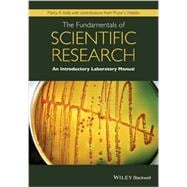The Fundamentals of Scientific Research: An Introductory Laboratory Manual is a laboratory manual geared towards first semester undergraduates enrolled in general biology courses focusing on cell biology. This laboratory curriculum centers on studying a single organism throughout the entire semester – Serratia marcescens, or S. marcescens, a bacterium unique in its production of the red pigment prodigiosin.
The manual separates the laboratory course into two separate modules. The first module familiarizes students with the organism and lab equipment by performing growth curves, Lowry protein assays, quantifying prodigiosin and ATP production, and by performing complementation studies to understand the biochemical pathway responsible for prodigiosin production. Students learn to use Microsoft Excel to prepare and present data in graphical format, and how to calculate their data into meaningful numbers that can be compared across experiments. The second module requires that the students employ UV mutagenesis to generate hyper-pigmented mutants of S. marcescens for further characterization. Students use experimental data and protocols learned in the first module to help them develop their own hypotheses, experimental protocols, and to analyze their own data.
Before each lab, students are required to answer questions designed to probe their understanding of required pre-laboratory reading materials. Questions also guide the students through the development of hypotheses and predictions. Following each laboratory, students then answer a series of post-laboratory questions to guide them through the presentation and analysis of their data, and how to place their data into the context of primary literature. Students are also asked to review their initial hypotheses and predictions to determine if their conclusions are supportive. A formal laboratory report is also to be completed after each module, in a format similar to that of primary scientific literature.
The Fundamentals of Scientific Research: An Introductory Laboratory Manual is an invaluable resource to undergraduates majoring in the life sciences.








